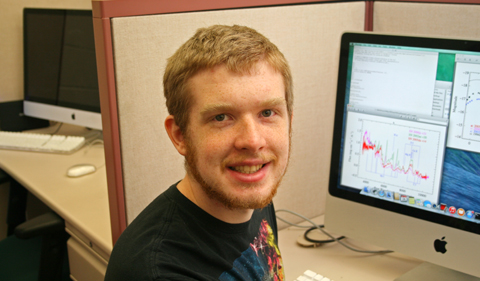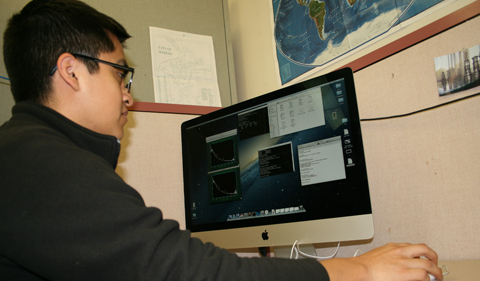
Jacob Williamson
By Jacob Williamson
(B.S. Astrophysics & B.S. Mathematics, Class of 2017)
I worked with Dr. Ryan Chornock in Physics & Astronomy during the summer 2015 on classification of supernovae based on light curves and spectral data. Specifically, I focused on one supernova from 2005, SN 2005da, which was classified as a run-of-the-mill Type Ic supernova, meaning it lacks any hydrogen or helium, but it is relatively normal otherwise.
However, according to the data we found, SN 2005da appears to be of a much more interesting nature; while still lacking hydrogen and helium lines, the supernova dimmed much faster than most Type Ic supernovae. This indicated a different mechanism powering the light curve from normal Type Ic supernovae.
I learned how to work my way around IDL, a programming language used for data analysis and graphing, as well as Python, another programming language for data analysis. I wrote at least 10 different programs to process the data I was given; in doing so, I learned how to effectively and efficiently plot and analyze data.
In addition, we discussed the major types of supernovae, Types Ia, Ib, Ic, and II, as well as how we classify them. I learned how we measure the light from supernovae using the UBVRI (or Ultraviolet-Blue-Visible-Red-Infrared) light filter system and how to correct this data for reddening caused by dust. I also learned a bit about spectral “fingerprints” of different elements and how to analyze spectral graphs for these “fingerprints.”
Dr. Chornock and I met at least one day a week, with multiple meetings per day for guidance and data I needed to analyze. At the end of the internship, I was able to create professional, publication-quality graphs.
Jacob Williamson – 2015 Intern with Dr. Ryan Chornock – junior at Ohio University – College of Arts & Sciences – astrophysics and mathematics major



















Comments